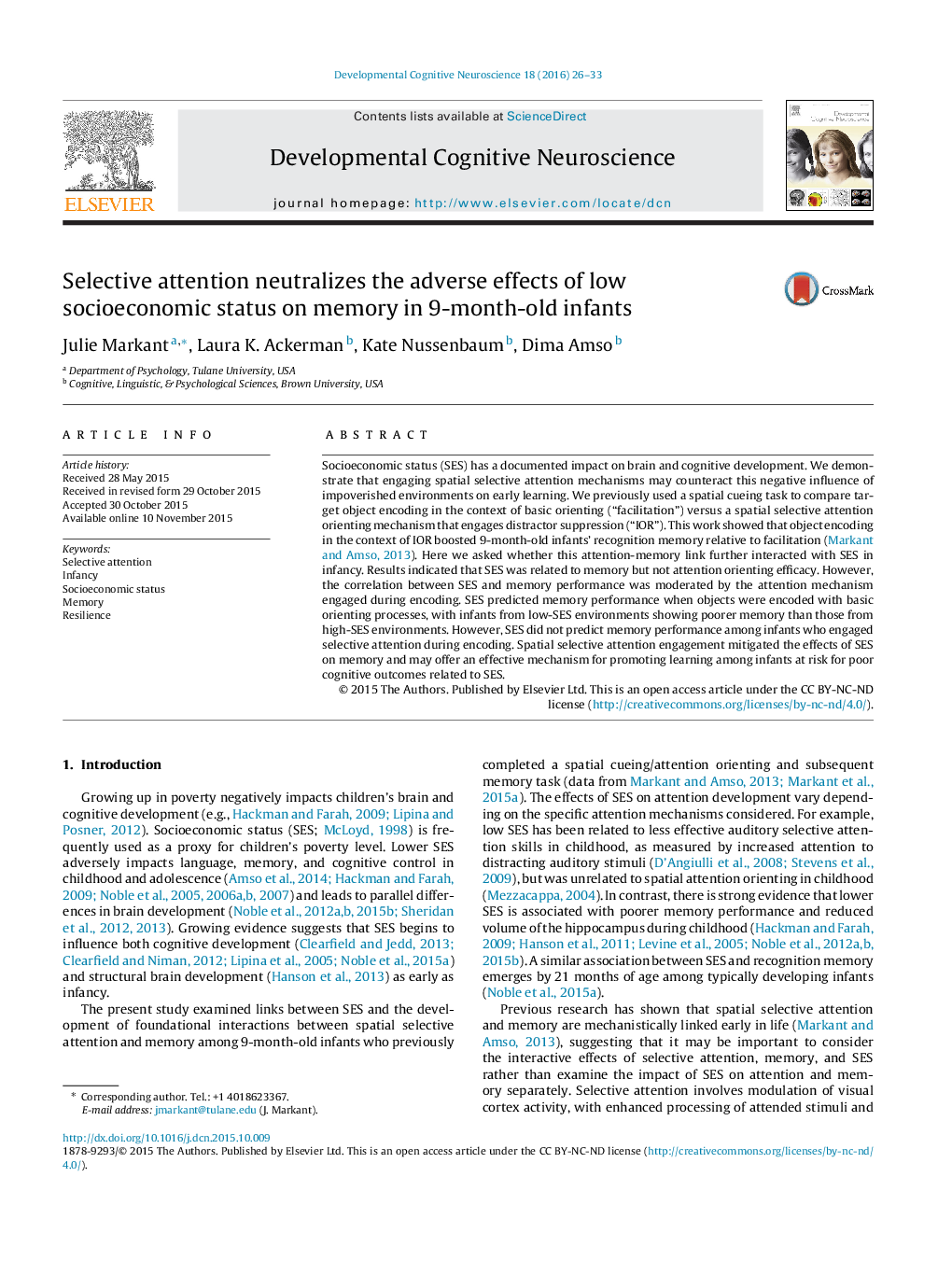| Article ID | Journal | Published Year | Pages | File Type |
|---|---|---|---|---|
| 4316499 | Developmental Cognitive Neuroscience | 2016 | 8 Pages |
•SES predicted 9-month-old infants’ recognition memory performance.•SES was unrelated to infants’ attention orienting efficacy.•The attention mechanism engaged at encoding moderated the SES-memory association.•Low SES predicted poor memory when basic orienting was engaged during encoding.•SES was unrelated to memory when selective attention was engaged during encoding.
Socioeconomic status (SES) has a documented impact on brain and cognitive development. We demonstrate that engaging spatial selective attention mechanisms may counteract this negative influence of impoverished environments on early learning. We previously used a spatial cueing task to compare target object encoding in the context of basic orienting (“facilitation”) versus a spatial selective attention orienting mechanism that engages distractor suppression (“IOR”). This work showed that object encoding in the context of IOR boosted 9-month-old infants’ recognition memory relative to facilitation (Markant and Amso, 2013). Here we asked whether this attention-memory link further interacted with SES in infancy. Results indicated that SES was related to memory but not attention orienting efficacy. However, the correlation between SES and memory performance was moderated by the attention mechanism engaged during encoding. SES predicted memory performance when objects were encoded with basic orienting processes, with infants from low-SES environments showing poorer memory than those from high-SES environments. However, SES did not predict memory performance among infants who engaged selective attention during encoding. Spatial selective attention engagement mitigated the effects of SES on memory and may offer an effective mechanism for promoting learning among infants at risk for poor cognitive outcomes related to SES.
